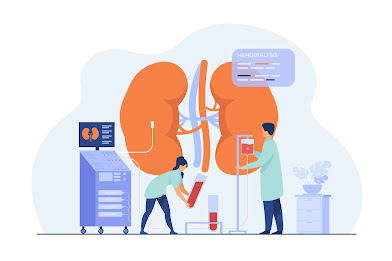Discover the Authentic Ayurvedic Experience: Exploring the Benefits of Panchakarma Treatment in India
One of the most effective and renowned treatments offered by Ayurveda is Panchakarma. Derived from the Sanskrit words 'pancha' meaning 'five' and 'karma' meaning 'actions', Panchakarma involves a series of detoxification and rejuvenation therapies that cleanse the body and restore its natural balance.
Understanding the principles of Ayurveda
Before delving into the benefits of Panchakarma treatment in India, it is essential to understand the principles of Ayurveda. According to Ayurveda, the human body is composed of three doshas – Vata, Pitta, and Kapha – which are responsible for maintaining physical and mental equilibrium. Any imbalance in these doshas leads to various health issues. Ayurvedic treatments, including Panchakarma, aim to restore the balance of these doshas through natural and holistic approaches.
Benefits of Panchakarma Treatment in India
Panchakarma treatment in India offers a wide range of benefits that go beyond mere physical detoxification. Firstly, it helps in eliminating toxins from the body, which accumulate over time due to poor dietary choices, environmental factors, and stress. By cleansing the body of these toxins, Panchakarma promotes overall well-being and enhances the body's natural healing abilities.
Moreover, Panchakarma treatment in India provides deep relaxation and rejuvenation. The therapies involved in Panchakarma, such as Abhyanga (oil massage), Shirodhara (oil pouring on the forehead), and Swedana (herbal steam therapy), not only nourish the body but also calm the mind and promote mental clarity. This holistic approach to healing ensures not only physical but also mental and emotional well-being
Additionally, Panchakarma treatment in India can effectively address chronic health conditions. By addressing the root cause of the ailment rather than merely treating the symptoms, Panchakarma offers long-lasting relief from various diseases, including digestive disorders, respiratory problems, arthritis, and stress-related ailments. With its personalized approach, Panchakarma treatment in India takes into consideration the unique constitution and specific health needs of each individual, resulting in tailored treatment plans that yield optimal results.
The five stages of Panchakarma treatment
Panchakarma treatment in India comprises five stages, each serving a specific purpose in the detoxification and rejuvenation process. The first stage is 'Poorvakarma', which involves preparatory measures to prepare the body for the main detoxification therapies. These preparations may include oil massages, steam treatments, and dietary modifications.
The second stage is 'Pradhanakarma', which includes the main detoxification therapies. This stage typically involves therapies such as Virechana (purgation), Vamana (emesis), Basti (enema), Nasya (nasal administration), and Raktamokshana (bloodletting). These therapies effectively eliminate toxins from the body and restore the doshic balance.
The third stage is 'Paschatkarma', which focuses on post-treatment care. This stage involves dietary and lifestyle modifications to ensure that the body maintains the benefits achieved through the detoxification process. The individual is advised to follow a specific diet, exercise regularly, and practice relaxation techniques to maintain the equilibrium of the doshas.
The fourth stage is 'Rasayana', which involves rejuvenation therapies that nourish and strengthen the body. These therapies include herbal formulations, tonics, and rejuvenating massages. Rasayana not only enhances physical well-being but also promotes longevity and slows down the aging process.
The final stage is 'Samsarjana Krama', which is the gradual return to a regular diet and lifestyle after the completion of Panchakarma treatment. This stage ensures a smooth transition and helps the body adapt to its normal routine without causing any sudden disturbances.
Choosing the best Ayurvedic treatment center in India
When considering Panchakarma treatment in India, it is crucial to choose the best Ayurvedic treatment hospital that offers authentic and effective therapies. Here are some points to consider when selecting a center:
Accreditation and certifications: Ensure that the treatment center is accredited by reputable Ayurvedic bodies and has certified Ayurvedic practitioners.
Experienced practitioners: Look for centers that have experienced Ayurvedic doctors and therapists who can provide personalized treatment plans tailored to your specific needs.
Quality of facilities: Check if the treatment center maintains high hygiene standards and offers modern amenities to ensure a comfortable and safe environment.
Reviews and testimonials: Read reviews and testimonials from previous clients to gauge the effectiveness and authenticity of the center's treatments.
Location and ambiance: Consider the location and ambiance of the treatment center, as a serene and peaceful environment plays a vital role in the overall healing experience.
By considering these factors, you can choose the best Ayurvedic treatment center in India that aligns with your requirements and provides an authentic Ayurvedic experience.
Conclusion: Embracing the authentic Ayurvedic experience in India
Panchakarma treatment in India offers a transformative and holistic healing experience. With its deep detoxification, rejuvenation, and personalized approach, Panchakarma not only addresses physical ailments but also nurtures mental and emotional well-being. By understanding the principles of Ayurveda and choosing the best Ayurvedic treatment center, individuals can embrace the authentic Ayurvedic experience in India and embark on a journey towards optimal health and well-being.



Comments
Post a Comment